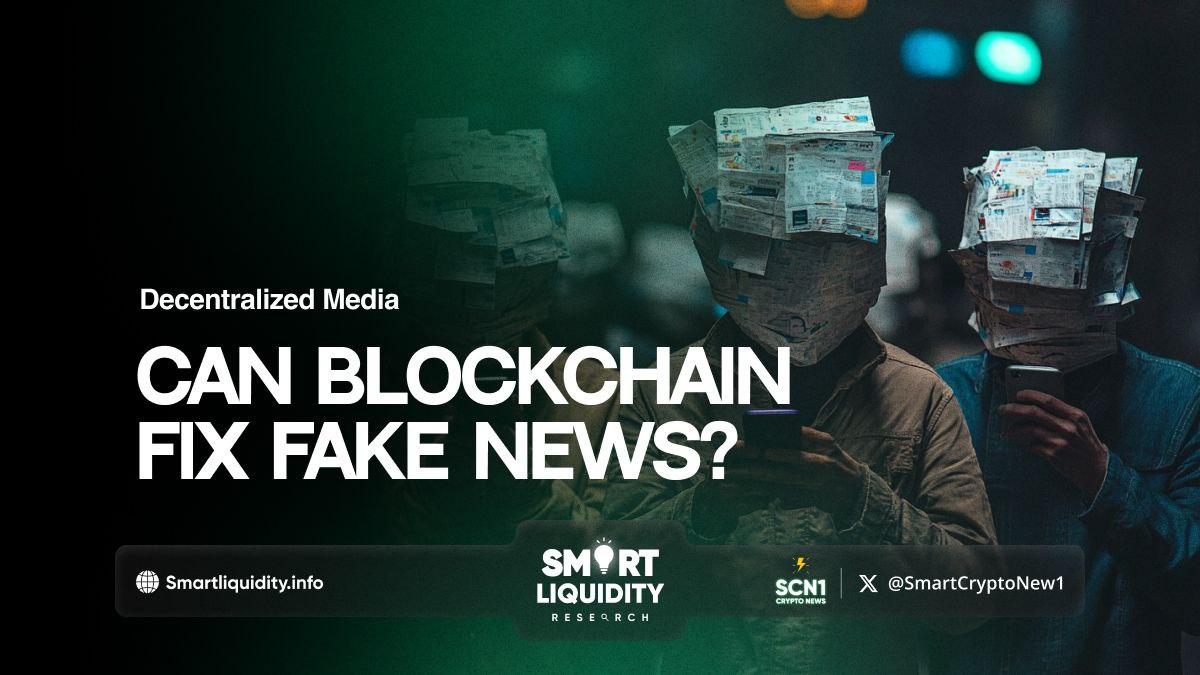Can Blockchain Fix Fake News? Exploring the Role of Decentralized Media


Can Blockchain Fix Fake News? Exploring the Role of Decentralized Media! Fake news has rapidly grown into a global concern. Misinformation spreads like wildfire on social media platforms, shaping public opinions, fueling conflicts, and often causing real-world damage. In this digital age, where information is constantly flowing, distinguishing fact from fiction has become increasingly difficult.
This is where blockchain technology might step in, offering a possible solution to the fake news epidemic. But can blockchain fix fake news? Let’s dive into how decentralized media could reshape the future of news dissemination and verification.
What is Fake News?
Fake news refers to misinformation or disinformation spread intentionally to mislead readers. This can range from false headlines to fabricated stories designed to deceive or provoke. As the Internet and social media enable the rapid exchange of information, fake news can easily infiltrate public consciousness and lead to serious consequences, from political manipulation to health crises.
The Power of Blockchain in Combating Fake News
Blockchain technology, best known for its role in cryptocurrencies, also holds transformative potential for other sectors, including media. The core features of blockchain — decentralization, immutability, and transparency — make it uniquely suited to tackling fake news.
Here’s how blockchain could play a role:
- Decentralized Media Platforms
Traditional news outlets and social media platforms are often centralized, making them vulnerable to censorship or manipulation. Blockchain-based media platforms, on the other hand, are decentralized, allowing users to interact with content without a central authority controlling the flow of information. This decentralization could foster a freer and more reliable exchange of news. - Content Immutability
One of blockchain’s key features is immutability. Once data is recorded on a blockchain, it cannot be altered or deleted. This ensures that once a news story is published, it remains intact and transparent, enabling users to verify the authenticity of the information and its sources. - Proof of Authenticity
Blockchain could provide a trail of authenticity for news stories, allowing users to trace a piece of information back to its source. Journalists or media outlets could record their credentials and sources on the blockchain, giving readers the ability to verify that the information is legitimate. - Smart Contracts and Fact-Checking
Smart contracts can be programmed to automatically verify information or flag content based on certain criteria. Imagine a smart contract triggering a fact-check on a piece of content before it is published or shared widely. This could reduce the amount of unchecked, misleading information spreading across platforms. - Community-Driven Verification
Blockchain’s decentralized nature also enables community-driven fact-checking. Users could collectively verify the accuracy of news articles, adding another layer of defense against false information. This peer-review mechanism could increase trust in media content, as a consensus is reached about its authenticity.
Challenges to Blockchain in the Fight Against Fake News
While blockchain presents promising solutions, it’s not a perfect or instant fix. Several challenges need to be addressed:
- Scalability
Blockchain networks can become congested, especially when dealing with large volumes of data, such as media content. Efficient scaling solutions will be necessary to support a global, decentralized media platform. - Accessibility
Not everyone is familiar with blockchain or has access to the tools needed to interact with decentralized platforms. Mainstream adoption would require user-friendly interfaces and broad public awareness. - Content Moderation
Decentralized platforms could become a breeding ground for unchecked information, as no central authority exists to regulate content. Striking a balance between freedom of information and maintaining content integrity will be crucial.
Real-World Examples of Blockchain-Based Media
A few projects are already experimenting with blockchain technology to combat fake news and decentralize media:
- CIVIL
This blockchain-based platform aimed to create a decentralized marketplace for independent journalism. Although it faced challenges in adoption, it showcased the potential of decentralized newsrooms to ensure transparency and truth in reporting. - Po.et
A platform focused on securing intellectual property rights for content creators. By timestamping media content on the blockchain, Po.et ensures that creators can prove ownership, while users can trace the authenticity of the content they consume. - DNN (Decentralized News Network)
A blockchain-powered platform where news articles are created, reviewed, and curated by the community, ensuring content accuracy and transparency.
The Future of News in a Blockchain World
As fake news continues to distort reality and undermine trust in traditional media, blockchain technology offers a glimmer of hope for the future of reliable news. While it may not be a complete solution, it provides the tools needed to make the news ecosystem more transparent, verifiable, and community-driven.
The rise of decentralized media could empower individuals to take control of the news they consume, ensuring that information is more accurate and less prone to manipulation. If widely adopted, blockchain has the potential to revolutionize how news is created, shared, and trusted.
In a world where headlines shape history, the implementation of blockchain in media could be the key to restoring trust in the information age.




